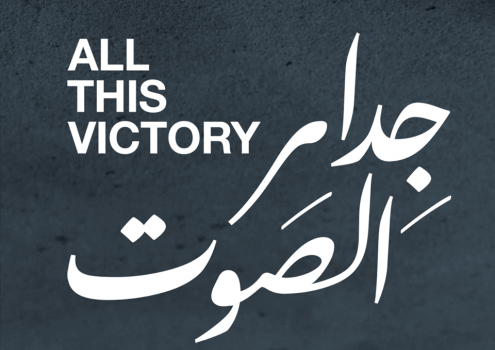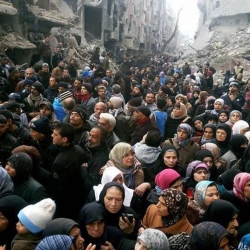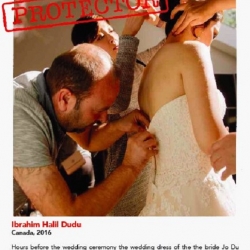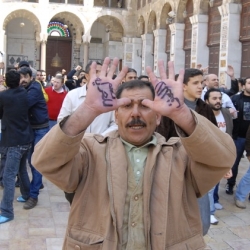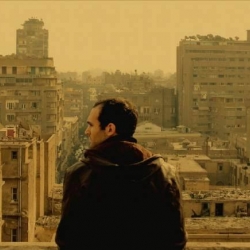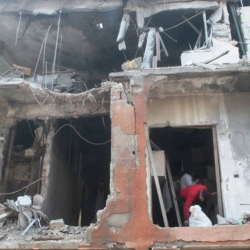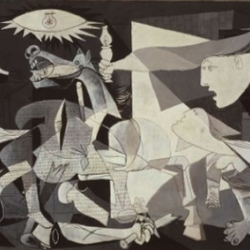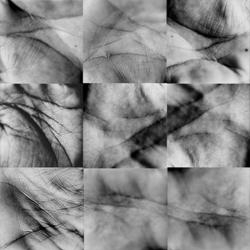A Conversation about a film that no one in Beirut has seen yet
24/03/2020
Author: A dialogue between Rasha Al Salti and Ahmad Ghossein
There has been much discussion in certain cultural milieus in Beirut about All this Victory (Ar: Jidār al-Sawt, trans: The Sound Barrier). Since I’m one of the few people who’ve seen the film and am in constant conversation with the director, Ahmad Ghossein, and despite preferring absolute silence so that any articles or debates come after having watched the film; but out of respect for writers who we like, and because we value the right to disagree, we had the following conversation.
Rasha Salti: First, there have been articles and views circulating about scenes in your film that were shot in Syria, despite the fact that no one in Beirut has seen the film yet. I work in the cultural sphere, in cinema to be precise, and I wonder about the dangers of these practices of criticism regarding your film, and the way it was produced and filmed. I’m also very anxious about the implications of this campaign. Because if it becomes legitimate to criticise or denounce something we haven’t watched or read or heard, and we allow the cultural press to rely on rumours and suppositions, then these practices come to resemble fundamentalist movements. To start with, what have you got say and how would you explain the process of filming a scene in Syria?
Ahmad Ghossein: I hope that everything that’s been written has been out of concern for the violence buffeting us from all sides, and also out of concern for safeguarding that space of freedom that still remains to us in this city. It’s a space that provides us with the right to disagree, and for serious and constructive discussion. I think that all cinematic work, regardless of the way it’s produced or its artistic choices, is comprised of ethical-political decisions and positions. Therefore, it’s to be expected that you’re placed right in the heart of ethical and political questions, and that any judgements begin from that starting-point. There’s no distinguishing between these conditions and methods of production, and the politics presented in the image itself. A film is a political position in cinematic language, otherwise it directly states a political line, which couldn’t be further from the case in this film. The film isn’t interested in showing the enemy’s violence at all. That violence is a foregone conclusion. Rather, it deals with confused and disturbed psychological and personal spaces. It attempts to submerge itself in the hidden anxieties of its characters so that as a viewer you lose your sense of security to a certain extent. It’s a film that puts civilians—left alone to face their fate, isolation and weakness—under the microscope. The war that’s taking place outside the four walls has no victor amidst our destruction and our tragedies. That scene, ‘the destruction outside the house’ was filmed in Zabadani in Syria for the sake of connecting the context of the film’s events with its cinematic content. I realise that the debate has centred on this scene’s process of production and how it was used and inserted into a film about the July 2006 war, as if the process of production is separate or plays out on its own in the background of the film. And in my film in particular, there’s no separation between the two, as well as between the dimensions that this scene adds.
RS: The film’s narrative takes place during the July 2006 war. The way it’s presented in the film, it could have been any one of our wars.
AG: That’s why we only see civilians in the film. I’m not interested in making a war movie, but neither am I saying that all combatants are equal by any means. It’s true that the events of the film take place during the 2006 war, but the tragedy remains for all those who lived through disaster, and those who lost some of their humanity and consciousness even though they might have survived the war. That’s what constitutes the core of the film. The experience might somewhat resemble the fear, death, and terror that civilians are powerless before in other wars.
RS: I know that you can’t explain a film or the context of a scene, and that would be an unenviable position to be placed in. But a filmmaker can explain their experiences writing and directing a film—rather than explaining its content—before it’s screened.
AG: How can I explain all of this without the focus becoming a single scene, and without allowing the viewer to pass judgement, while bearing my responsibility towards the viewer, and all the while without having already explained what I was trying to say in the film and leaving the space to think freely?
RS: Can you tell us about this scene’s process of production?
AG: On the level of the conditions of production, it was something that we always do in our artistic work, which always involves dealing with the de facto authorities, but without the works being complicit with those authorities, but rather remaining critical, scandalous and even at times ‘subversive’. This is what art should always do. In addition, I mention in the film where and how the scene was filmed, with the permission of which authorities and the owner of the house we stood in front of.
RS: Were you aware from the beginning that you were entering a territory of tragedy, open wounds, and an ongoing war?
AG: Of course. From the very first moment, I knew the scale of the responsibility and the scale of the tragedy. Yes, I know that filming destruction is extremely sensitive, beginning from my own fear that one tragedy might erase another. I went to Zabadani in Syria, and I was horrified by the scenes of destruction. This confused me, given that I’m used to those sorts of scenes. It was a terrifying scene, the silence of city poised between destruction and ruin took me back for a moment to the images and scenes of the 2006 war. The destruction was similar, the result of aerial and artillery bombardment. The images were so similar to the extent that one set of images seemed to erase the other—similar in their corrosiveness and in a formal sense, and despite the lack of similarity in their political life and context. The question was, how did it—the image—formally represent those who declared themselves victorious both here and there. Yes, I know that it’s an open wound over there, and that everyone lives the tragedy of war differently. But that doesn’t mean that there’s no link between all these tragedies, or that we have no right to draw links between them to reveal other aspects of these practices inherited through diverse historical and cultural circumstances. In addition to all this, it’s important to note that this is a fiction film, not a documentary.
While being completely conscious of all the political and humanitarian connotations of the Syrian tragedy, I allowed myself to film a scene of the film in Zabadani. And whether or not I did myself damage in my approach to that scene, one should withhold judgement until having watched the film, until understanding its content, and its overall political and artistic intentions.
I’m eager to see the reactions of viewers when the film is screened in Beirut. What I do know is that I didn’t choose the easy way, or create a facile artwork, or choose the lazy option, since my artwork is based on personal experience and a reality I interact with on a daily basis.
This article was translated from Arabic to English by Stefan Tarnowski



